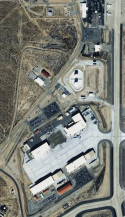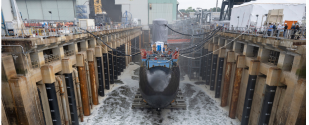And in a timely contribution to this discussion the CRS released An important item is note this is a DoD initiative, not a service initiative although the program is folded under NGAD as CCA. Not much production progress so far
While the USN is stumbling with building and repairing ships, the Starlink/Starshield Sailor Edge Afloat and Ashore (SEA2) seems to be proceeding rapidly It's not clear where PMW170 is getting the funding but it's likely out of someone's O&M,N account. No signs of a Program of Record being stood up and so far it seems to be an ad hoc initiative started by the Abraham Lincoln's CSO. Maybe the services want to keep this goodie out of DoD's hands. You can trade your missile numbers back and forth but I believe SEA2 will provide significant improvements on training, logistics and even tactical operations.
There isn't a Production Baseline, a production contract nor even funds to proceed into productionReplicator, unveiled on August 28, 2023, is a Department of Defense (DOD) initiative, led by DOD’s Defense Innovation Unit (DIU), to field thousands of uncrewed systems by August 2025.
As a reminder, DoD's FY25 funding begins this October ... unless Congress continues its precedent of Continuing Resolutions which according to law don't enable release of funds for new initiatives.A key issue facing Congress is whether to approve, reject, or modify DOD’s funding requests for Replicator, and whether Congress has adequate information about Replicator to assess its merits and conduct effective oversight of the initiative.
While the USN is stumbling with building and repairing ships, the Starlink/Starshield Sailor Edge Afloat and Ashore (SEA2) seems to be proceeding rapidly It's not clear where PMW170 is getting the funding but it's likely out of someone's O&M,N account. No signs of a Program of Record being stood up and so far it seems to be an ad hoc initiative started by the Abraham Lincoln's CSO. Maybe the services want to keep this goodie out of DoD's hands. You can trade your missile numbers back and forth but I believe SEA2 will provide significant improvements on training, logistics and even tactical operations.


